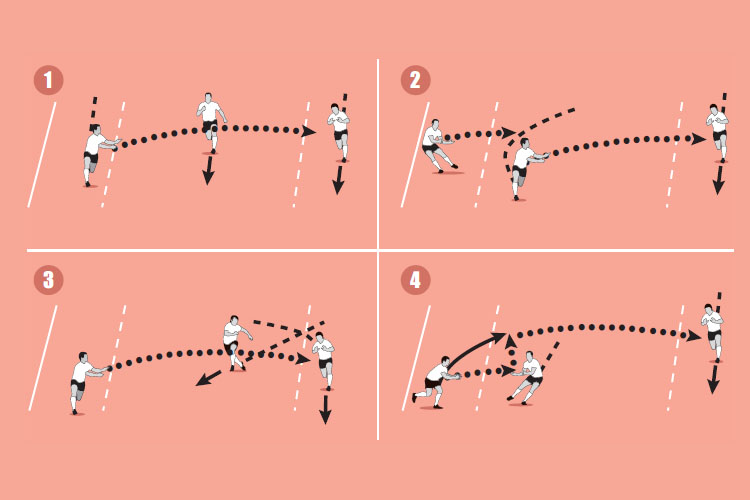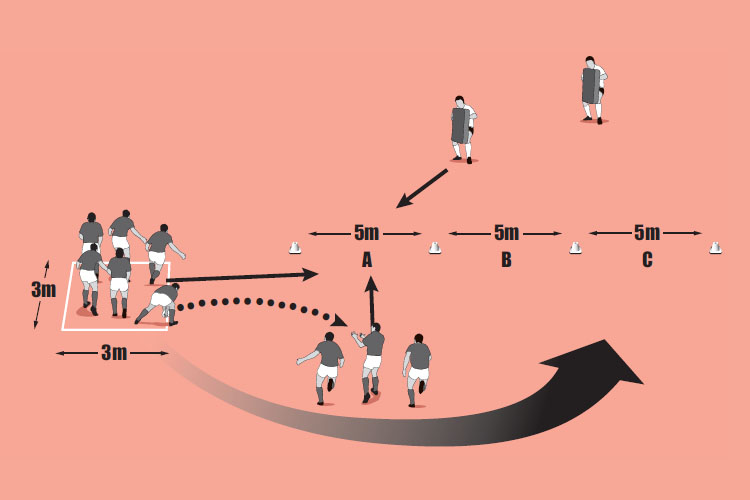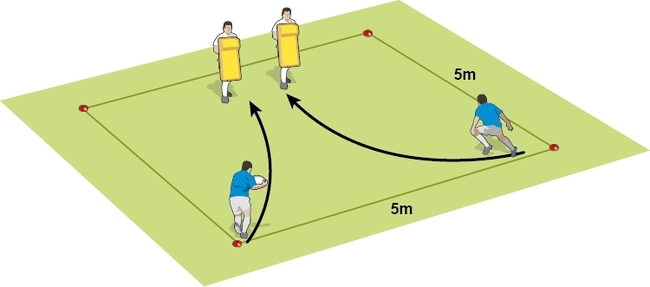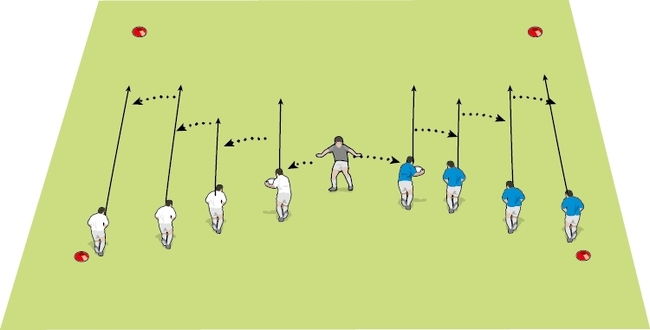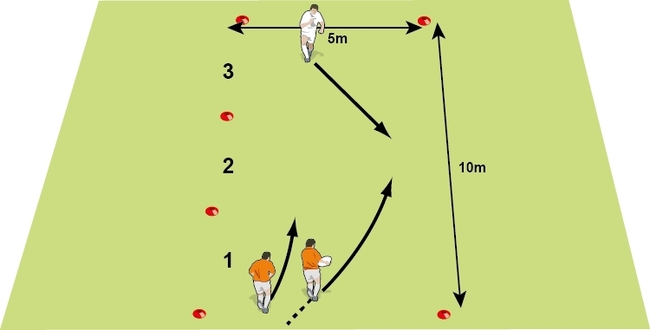Eyeball Training
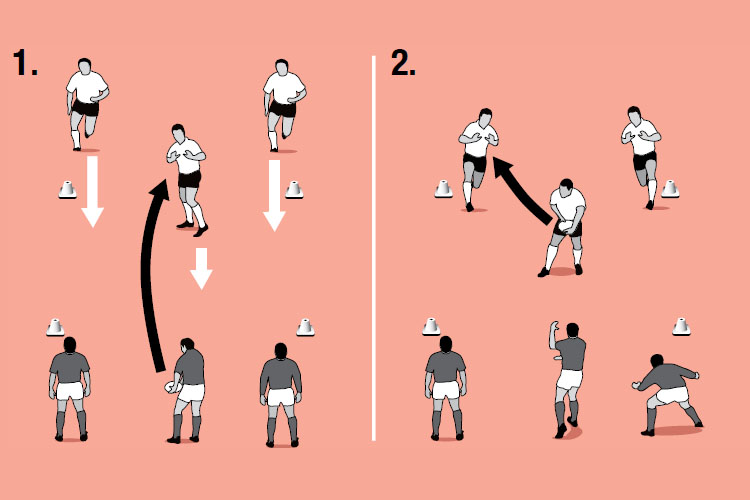
Training your players to “play what is in front of them” requires them to scan first, and then react. This session works on “eyeball reactions” to events, where the player has to catch and pass whilst focusing on the actions of potential tacklers. The development and game bring these skills into more real situations.
Warm up time: 7-10
Session time: 10-15
Development time: 10-15
Game time: 15-20
Warm down time: 7-10
What to think about
How can players improve their hand eye coordination outside the training sessions?- Juggling tennis balls. A player can use one hand with two balls and then two hands with three balls. They can then develop this by working with a partner who throws in a ball as the juggler throws out a ball.
- Holding a drinking straw at arms length and trying to thread a piece of string through it. As the player improves, he can do this walking, and then weaving through a simple obstacle course.
set-up
- Keep your head up, looking forward, moving your head only slightly to maintain your balance as you look around.
- With your hands as a target at about shoulder height, take passes and give the ball to the player who is in the best position to receive the ball. In other words seek out spaces in the opposition line.
What you get your players to do
Split your team in groups of three, with two threes working at a time. Set up the players as in the “eyeball training” diagram 1. The ball carrier passes to the receiver in the middle 2. The receiver looks up to see which of the players facing him dips and then passes to a team mate running into the box who is further from the dipping player. Repeat with the original three defenders and the next set of attackers. You can change the trigger movement of the dipping player to, for example, falling over, putting his hand up or simply stepping to one side. The first pass can be made more difficult as well.Thank you for reading
to enjoy 3 free articles,
our weekly newsletter, and a free coaching e-book
Or if you are already a subscriber, login for full access
Newsletter Sign Up
Coaches Testimonials

Gerald Kearney, Downtown Las Vegas Soccer Club

Paul Butler, Florida, USA

Rick Shields, Springboro, USA

Tony Green, Pierrefonds Titans, Quebec, Canada
Subscribe Today
Be a more effective, more successful rugby coach
In a recent survey 89% of subscribers said Rugby Coach Weekly makes them more confident, 91% said Rugby Coach Weekly makes them a more effective coach and 93% said Rugby Coach Weekly makes them more inspired.
Get Weekly Inspiration
All the latest techniques and approaches
Rugby Coach Weekly offers proven and easy to use rugby drills, coaching sessions, practice plans, small-sided games, warm-ups, training tips and advice.
We've been at the cutting edge of rugby coaching since we launched in 2005, creating resources for the grassroots youth coach, following best practice from around the world and insights from the professional game.





